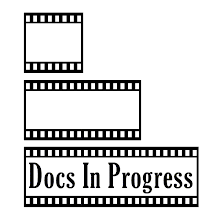Another year, another Silverdocs. For me, a non-prolific blogger and an even less prolific film fest traveler, it was one of two major doc festivals I'll get to this year (the other one being Full Frame, which I wrote about a few months ago).
Now in its sixth year, Silverdocs has been the DC-area festival which has refused to be relegated to a status of regional or local festival. In fact, it has aspired from the start to have a broader impact as one of the A-List festivals (or at least A-List for documentaries). In this, it has succeeded, drawing thousands of submissions from around the world and putting together a sidebar conference which draws industry from both the local suspects (Discovery Networks, National Geographic, PBS, and CPB) and the key players in New York, Los Angeles, and worldwide (though this year, the conference had far less representation from overseas than in past years, choosing instead to focus on a new strand for educators).
The film festival continues to draw audiences in droves through a combination of film premieres, films which have gotten buzz from earlier plays at key festivals like Sundance, IDFA, and Tribeca, creative programs (like outdoor screenings), and doing an amazing job of having most of the filmmakers (and indeed, many of the main characters in the films) available for Q&A. It is this last point which is so key, especially for those of us who lead busy lives and need as much incentive as possible to head to a theater for a screening. The opportunity to interact with the creative minds and subjects of the films is what makes festivals stand out from regular theatrical screenings. Some in the film community are mourning the loss of theatrical release as a viable distribution method for many documentary films and the fact that film festivals are often serving as a substitute for theatrical release. While I understand the concerns over lost revenue to filmmakers, it is the interactivity which is only possible at a film festival which will drive more viewers to the theater. Indeed, there are some films which are best appreciated on a large screen. But when they are relegated to the smallest theater of the corporate art houses (like Landmark) or must be seen in a dilapidated repertory theater with maybe 10 people in the audience, I wonder sometimes if I'd have a better experience at home. Thankfully seeing a film in AFI's Silver Theatre with a full house abuzzing with excitement and the promise of a good Q&A is what makes Silverdocs worth taking a week's vacation in my hometown to attend every year.
I found a lot of things were much improved this year. The decision by the programmers to hold passholder-only screenings (to ensure passholders do not get shut out of films) was a great idea. Not requiring passholders to get tickets for screenings was, on the one hand, a great thing to reduce inconvenience, but made it impossible for the passholder to decide how to split up the screenings (for example, inviting a spouse or friend to attend a screening now meant they had to buy a separate ticket rather than take one of the 10 passholders had been given in past years). But, all in all, a great system where I didn't get shut out of a single film.
And yippeee, the Cinema Lounge was back in its rightful place just around the corner from the theaters, allowing for ease of access and a much more hub-bubby atmosphere. With the exception of a downpour on Opening Night, the weather cooperated too -- though out-of-towners could have done with warnings about DC summer dress necessities of layers -- since theaters often felt a 30-50 degrees cooler than the air on the street.
And I always find Silverdocs an opportunity to see the ever-changing face of Silver Spring. Those who have read my comments from past years know that I am a big booster for the place since I grew up there, lived most of my 20s there, and have my own mixed feelings about its development now that I could never even hope to afford living there. Hearing visiting film folks referring to the streets in the immediate vicinity of the theater as reminding them of the Grove in Los Angeles (the open-air shopping center which has dwarfed the historic Farmer's Market) would surely make my late father -- a long-time Silver Spring anti-development advocate and former Los Angeleno, roll in his grave. But I was proud of a few filmmakers -- led by the Energy King Sandi Dubowski -- who ventured further afield in search of downtown Silver Spring's amazingly diverse dining options. And, even in the Grove-like fake mainstreet of former real street Ellsworth Avenue, it was a joy to see the life of what is still one of the most diverse communities in the DC area: kids playing in the fountain, teenagers hanging out at night, and humans of all colors, classes, and backgrounds sharing a space in real life, real time, not just on the screen.
Gosh, I haven't even begun to collect my thoughts on the films and conference. But I have a lot to say. Next up, my thoughts on the films...
Subscribe to:
Post Comments (Atom)




No comments:
Post a Comment